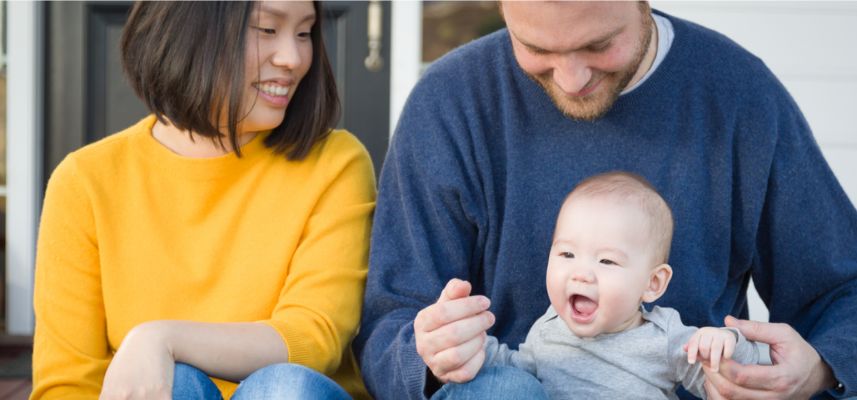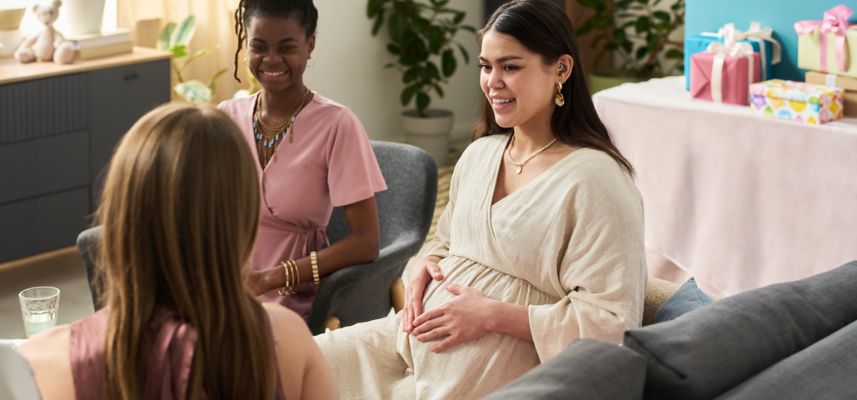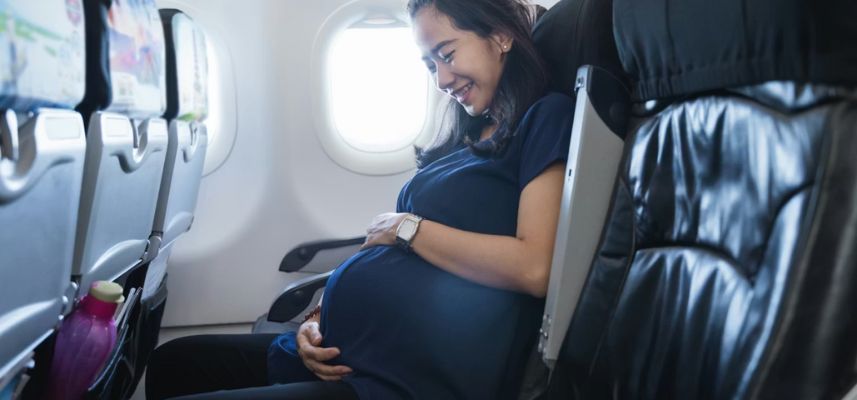Key Takeaways:
-
Baby Safety Month is held every September and was created by the Baby Safety Alliance (formerly Juvenile Products Manufacturers Association)
-
In addition to providing advice on how to create a safe environment for baby, the campaign focuses on educating parents and caregivers about selecting and using baby products safely
-
Key safety areas include car seats, safe sleep practices, and babyproofing your home
If you're expecting or have a new baby at home, keeping your little one safe is probably at the top of your mind, and that protective instinct is exactly what makes you a great parent! But between reading every label, seeing different opinions on social media, and wondering if you've babyproofed enough, it's easy to feel overwhelmed by all the safety information out there.
That's exactly why Baby Safety Month exists. Every September, the month-long campaign brings together parents, caregivers, and safety professionals to focus on one important goal: creating a safe environment for babies and young children. Baby Safety Month is designed to help you feel confident and informed about keeping your baby safe.
In this guide, we'll walk you through what Baby Safety Month is all about, when it happens, and some practical safety tips that can give you peace of mind as you navigate life with your little one.
What Is Baby Safety Month?
Baby Safety Month is an official awareness campaign created by the Baby Safety Alliance (formerly the Juvenile Products Manufacturers Association) to educate parents and caregivers about baby product safety. The BSA is an advocate for the safety and quality of baby and children's products, and they've made baby safety a priority through this annual campaign.
The focus of Baby Safety Month is raising awareness about how to select, install, and use baby products properly. From car seats to cribs and baby gates to bath equipment, every product in your home plays a role in your child's safety, but only if it's used correctly.
Beyond promoting products, Baby Safety Month provides resources, safety tips, and helpful insights to families. The annual campaign connects parents with professionals who can answer questions, offer guidance, and help you make informed decisions about keeping kids safe. It's also an opportunity for parents to check regulations, test equipment, and ensure everything in their house meets current safety standards.
What Month Is Baby Safety Month?
Marking the ninth month of the year, Baby Safety Month takes place every September. While Baby Safety Month is concentrated in September, the principles and practices promoted during this campaign matter all year long. Just think of September as your annual reminder to review safety measures, update equipment as your child grows, and stay current on the latest safety recommendations!
Is November Child Safety Month?
Yes, November is recognized as Child Safety and Protection Month. Like Baby Safety Month, November's efforts focus on raising awareness about the potential risks and dangers children face in and out of the home. The campaigns overlap in their efforts to promote the safety and well-being of children throughout every stage of the parenting journey, but differ in their areas of focus.
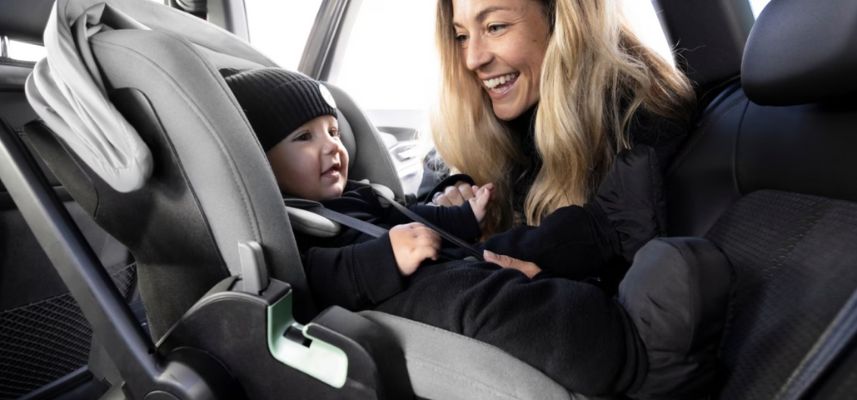

Creating a Safe Environment: Key Safety Areas
Now that you know what Baby Safety Month is all about, let's focus on the practical side: creating a safe environment where your baby can thrive.
Car Seat Safety
From the moment you leave the hospital with your baby, having a properly installed car seat is essential. Once you learn the key steps, it becomes second nature. Let's walk through how to get it right from the start.
Before Installation:
-
First, make sure your selected car seat is compatible with your vehicle by installing the car seat before your baby is born. Reference both the car seat and vehicle's manuals for instructions on how to install the car seat properly.
-
For infants, you'll need a rear-facing seat with a harness system to protect baby's head, neck, and spine.
Installation Steps:
-
When placing the car seat in your vehicle, make sure it faces the back seat and that the base is flat.
-
If possible, use the LATCH system to install your car seat. This involves making sure the lower anchor straps are straight and untangled before connecting them to their corresponding anchors.
-
Next, tighten the base to achieve a snug fit. Wiggle the base and make sure it doesn't move more than one inch in any direction. If it does, it's not tight enough.
-
For infant seats, the seat should recline at an angle of about 30-45 degrees to help keep your child's airway open. This angle will differ between manufacturers and will need adjustment as your child grows.
Important reminder: Not all car seats will have the same installation process so always make sure to refer back to the manufacturer’s instructions. Also be sure to refer to your child's weight and size, not their age, when determining if they're ready for a larger or forward-facing car seat. Each seat will list its maximum weight and height limits.
What is the Newborn 2-Hour Rule?
Speaking of car seats, you might have heard about the "2-hour rule" and wondered what it means. This safety guideline recommends that newborns and young infants shouldn't remain in car seats for more than two hours at a time, especially outside of the vehicle.
When babies are in a semi-reclined position in car seats for extended periods, it can potentially restrict their breathing and affect oxygen levels. Their neck muscles aren't strong enough yet to keep their airways completely open if their head slumps forward.
Practical application of the 2-hour rule:
-
If you're on a long car trip, stop every 1-2 hours to take baby out of the seat for a break
-
Don't use car seats as a substitute for cribs or bassinets at home or in other locations
-
Babies often fall asleep in their car seats, strollers, or swings. When this happens, gently move them to a flat surface and lay them on their back
-
Never let your baby sleep in a car seat overnight
This doesn't mean you need to panic if you occasionally exceed two hours on a necessary trip, but it's important to be mindful of how much time your baby spends in a car seat, and it serves as a helpful guideline to prevent making car seats a regular sleeping spot.
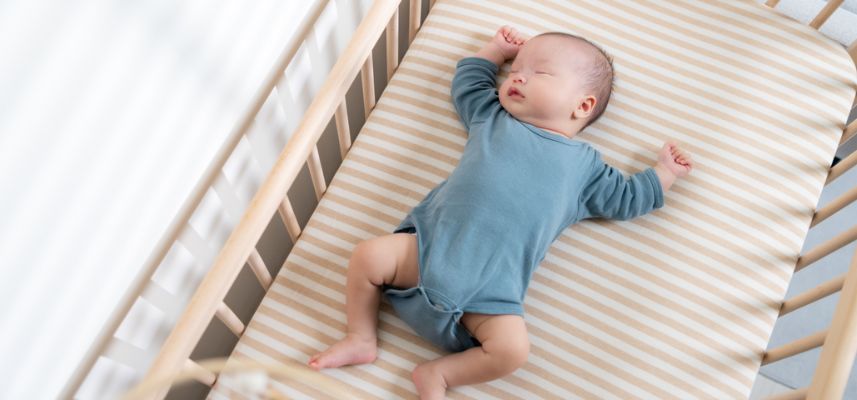

Safe Sleep Practices
Now that we've covered car seat safety and why babies shouldn't sleep in them for long periods, let's talk about creating a safe sleep environment at home. Following these guidelines can help reduce the risk of sudden infant death syndrome (SIDS), strangulation, and suffocation.
Creating a safe sleep environment:
-
Feeding breast milk is recommended since it is associated with a lowered SIDS risk
-
Keep your baby's crib free of pillows, blankets, toys, bumpers, and plushies. The mattress should only be covered with a tight-fitting sheet
-
Always place your baby on their back for naps and nighttime sleep
-
Position the crib away from windows, lamps, heaters, wall decorations, and cords
-
It’s recommended that your baby should sleep in your room until they reach six months to a year in age, but don't share your bed—let them sleep in their own crib or bassinet
-
Never let your baby sleep on a nursing pillow or other soft surface
About swaddling and temperature:
-
It's fine to swaddle your baby as long as they're placed on their back and aren't showing signs of rolling over, never swaddle too tight. There is no evidence to support swaddling reduces the risk of SIDS
-
For temperature, your baby should wear only one extra layer beyond what you're comfortable in
-
Signs of overheating include flushed cheeks, fussiness, and a sweaty back
Pacifiers and safe sleep: Offering your child a pacifier at bedtime can help soothe them and may reduce the risk of SIDS. If you're not breastfeeding, offer the pacifier at any time. If you are breastfeeding, wait until nursing is going well before introducing a pacifier.
If you might fall asleep while breastfeeding: If you think you might fall asleep during a breastfeeding session, position yourself in the C-position (“cuddle curl”) on a firm bed surface away from walls and furniture without soft blankets or pillows nearby. Avoid breastfeeding in chairs or on the couch when you feel fatigued. It's safer to be in bed where your baby won't fall if you doze off.
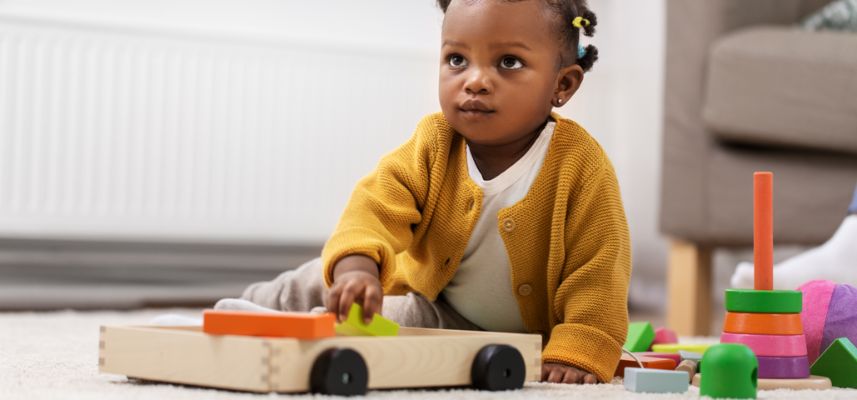

Babyproofing Your Home
Looking at your home through a baby safety lens takes time, and that's okay. You don't need to have everything babyproofed before your baby arrives. In fact, some precautions won't be necessary until your baby starts crawling and reaching for things.
Before bringing baby home:
-
Check baby furniture like your crib and changing table to ensure they were properly assembled. They should be sturdy without loose or missing parts.
-
Check if any of your baby furniture has been recalled by visiting the U.S. Consumer Product Safety Commission website.
-
Make sure your home is slip-proof (this one helps you, too, mama!). Secure all rugs with non-skid liners and ensure railings are stable. Place a non-slip rug under the changing table.
Emergency preparedness:
-
Test your smoke alarms and carbon monoxide detectors to ensure they're working properly
-
Get a fire extinguisher (and learn how to use it!) and create a fire escape plan
-
Keep a list of emergency numbers accessible, including your partner's cell phone, poison control (1-800-222-1222), and your pediatrician
As your baby grows: As your little one becomes mobile, you'll need to add baby gates at stairs, secure furniture to walls to prevent tipping, cover electrical outlets, and move hazards out of reach.


Resources and Support for Baby Safety
In addition to raising awareness, Baby Safety Month connects families with helpful resources and professionals who can provide guidance. Throughout the month, you'll likely find research-based safety information from your favorite brands and parenting resources, including product testing insights and tips for maintaining a secure environment for your children.
Many communities also offer free car seat inspection events in September where certified technicians can check your installation and answer questions. Local hospitals, fire departments, and health departments often provide these services year-round as well.
If you're feeling overwhelmed by all the safety considerations, take a breath! You're not expected to become a safety expert overnight. Learning as you go is completely normal, and there are plenty of resources to support you. Reach out to your pediatrician, lactation consultants, or other healthcare providers whenever you have questions. That's what they're there for! And remember, support comes in many forms, from official safety resources to the practical help you need for feeding and caring for your baby.
We're Here to Support Your Journey
At Aeroflow Breastpumps, we're committed to supporting new parents through every stage of pregnancy and early parenthood. While we specialize in helping you get breast pumps and breastfeeding supplies through insurance, we also care about your overall well-being and your baby's safety. Browse our collection of educational classes to help you navigate your pregnancy and postpartum journey.
Baby Safety Month is a great reminder that keeping your little one safe doesn't mean being perfect. Stay informed, ask questions when you're unsure, and do your best with the resources available. You're already doing an amazing job by seeking out information and taking your baby's safety seriously!

